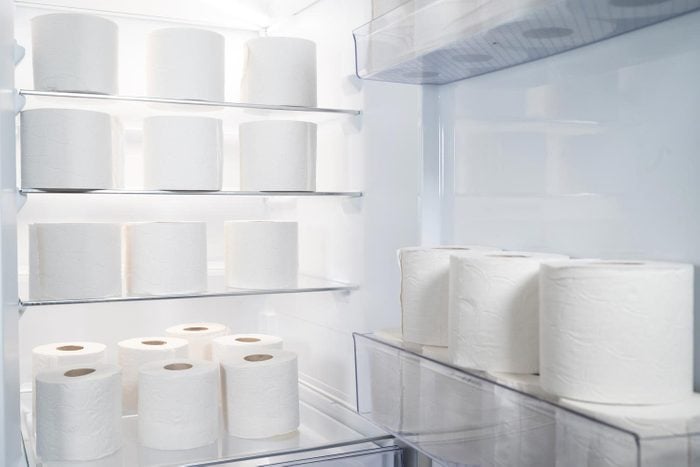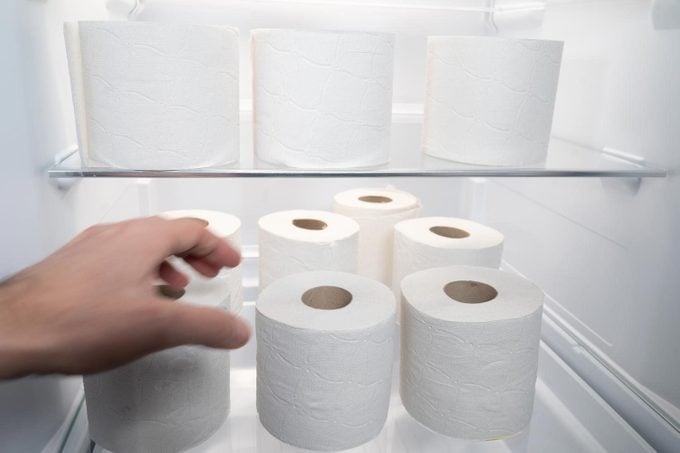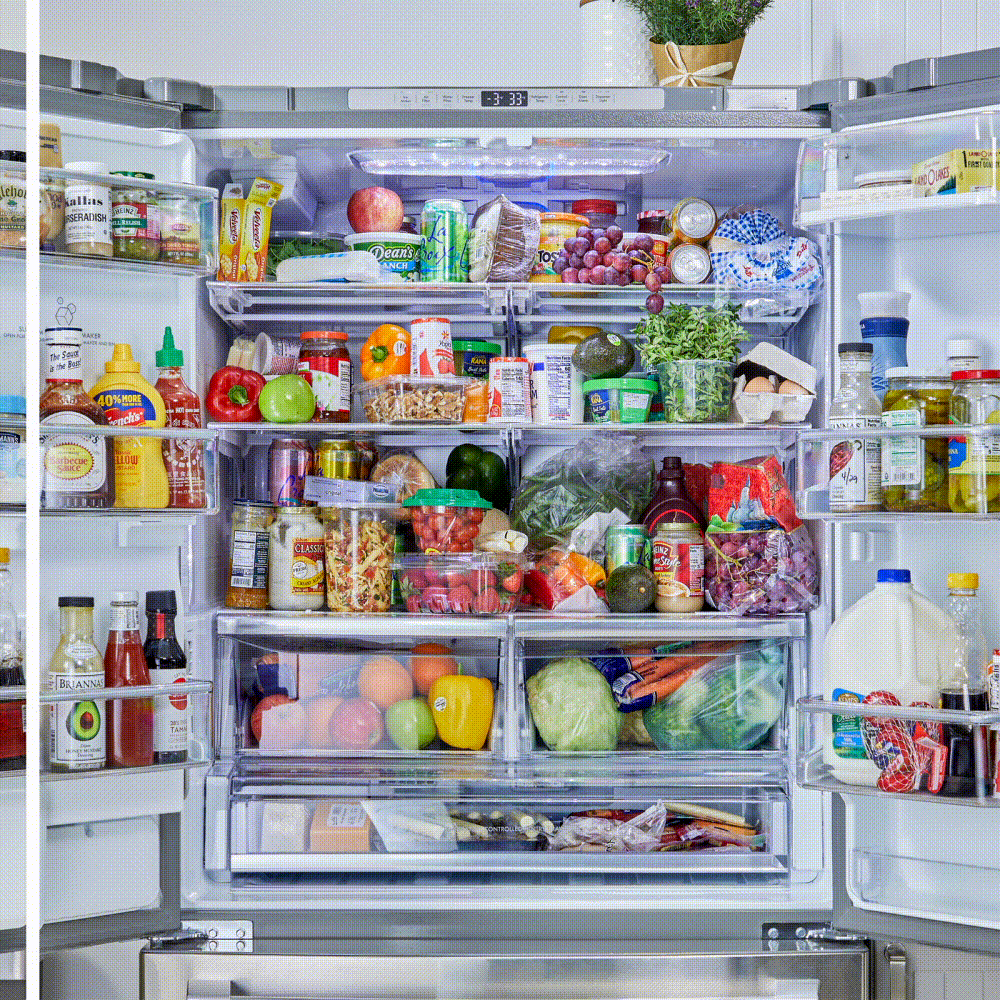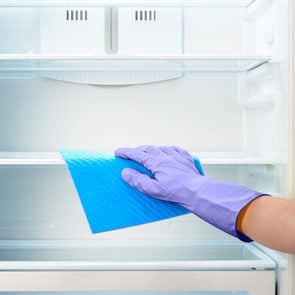Why Are People Putting Toilet Paper in the Fridge?
Updated: Apr. 24, 2024

Have you heard of this trend? We'll explain how it works and let you decide if it's worth trying out for yourself.
Social media is an amazing thing. It lets us communicate with people all over the globe, spreading idealistic goals, offering support and encouraging each other to put toilet paper in our refrigerators.
That’s right. Recently, people on social media are advising you to replace that box of baking soda in the back of your fridge with a roll of toilet paper.
Does this weird trick work? We asked kitchen and appliance experts to see what the pros had to say!
Why put toilet paper in the fridge?
Ruiz Asri, editor of Honest Food Talks, says toilet paper’s absorbency is behind this hack. “Moisture in the refrigerator often contributes to mildew and unpleasant odor,” Asri says. The toilet paper absorbs excess moisture, along with foul smells, Asri says.
References to toilet paper in the fridge can be found as far back as 2015. But the dedicated use of it as an odor absorber seems to be more recent, primarily in the last year or so, with videos appearing on TikTok and Facebook.
Does it work?

Yes—to a point. While TP will absorb odors, other options are more efficient, take up less space and generate fewer odd looks from houseguests.
We spoke to one person who’s tried the TP technique. Amy, from the eponymously named parenting blog Amy & Rose, had some fishy smells in the fridge, and her daughter suggested that she try the toilet paper hack. So did it work?
“In my experience, somewhat,” she says. But here’s the catch: It’s just a temporary fix.
Alternative fridge odor busters
So if you want something longer lasting that takes up less space, here are some alternate odor-fighting strategies:
Baking soda
Baking soda is the go-to solution for most U.S. households. It caught on in the 1970s, when manufacturer Arm & Hammer promoted it as an environmentally friendly alternative to chemical cleaning. By 1994, the Los Angeles Times reported “more refrigerators are likely to have baking soda than working light bulbs.”
Baking soda is a base material, which means it neutralizes acids. Because most odors are acidic, it can cut off the smell at the source. (Side note: After deodorizing a fridge with baking soda, don’t use the contents of that box for baking. Cooking can reactivate those acids and contaminate your cake.)
As the baking soda interacts with more acids, it becomes less effective. Most people will need to replace it every three months.
Black cumin seed oil
Corinne Segura, a building biologist practitioner and founder of My Chemical-Free House, has first-hand experience with fridge odors.
“When food went bad in my fridge, it left a lingering foul odor,” she says. “I used black cumin seed oil, which has a deodorizing effect, to clean up the smell.”
Segura credits this to the essential oil’s ability to deodorize methyl mercaptan, a chemical that produces a rotten scent.
“I mixed five drops of black cumin essential oil with 1 tablespoon of dish soap and applied it in a thick layer to all the plastic components inside the fridge,” she says. “I let it sit for two hours before washing it off. This worked well to get rid of foul odors in the fridge.”
Activated charcoal
Activated charcoal captures the particles that cause bad smells, just like toilet paper. It’s available as a powder, in pre-cut filters or as fabric you can cut to size.
It functions by collecting the volatile compounds given off by smelly items, reducing odor. Swap out the charcoal every month or so to keep it effective.
Vanilla extract
For those who prefer a more pleasant scent, especially around their food, Asri offers a particularly sweet recommendation. “Soak a cotton ball in vanilla extract and place it in the refrigerator,” he says. “This combats bad odors and leaves your fridge smelling like a bakery.”
UV light purifier
If you gravitate toward high-tech solutions, consider a fridge with a UV light filter. This comes from Alexander Hill, a sales rep for U.K.-based Appliance Depot.
“Ultraviolet light can destroy bacteria, molds and other pathogens,” says Hill. “Some fridge purifiers use UV light to sanitize the air and surfaces inside the fridge, thus reducing the source of many odors.”
Refrigerators like the Samsung Bespoke line have offered UV deodorizing filters as an option since 2021, while other brands feature UV filters on in-door water dispenser lines.
Hill says these filters are particularly useful for large refrigerators or persistent trouble areas, where passive odor absorption might not be enough. Electronic purifiers, he says, also reduce bacteria and mold, leading to a fresher and potentially safer food storage environment.
Crumpled newspaper and charcoal
If you want a deep-clean on your fridge or freezer at minimal expense, go with one paper product that’s even cheaper than toilet paper. Fill up a particularly stinky fridge with crushed charcoal and crumpled newspaper (you can buy unprinted newsprint paper).
You’ll need to replace the newspaper every day for about a week, but it’s a low-cost way to deal with a foul-smelling situation.
Take that, toilet paper.
About the experts
- Ruiz Asri is the chief knowledge officer and editor of Honest Food Talks, a food and beverage site.
- Amy Smith is the founder of Amy & Rose, a parenting blog and fashion accessory brand.
- Corinne Segura is a building biologist practitioner and the founder of My Chemical-Free House, a guide to healthier homes.
- Alexander Hill is a sales rep for United Kingdom–based Appliance Depot.
Sources:
- Los Angeles Times: “Baking Soda’s Star Rises: Out of the Fridge, Into … Everything”
- Journal of Oleo Science: “Deodorizing Substance in Black Cumin (Nigella sativa L.) Seed Oil”
- CNET: “For CES 2021, Samsung’s new refrigerators embrace the custom aesthetic trend”


